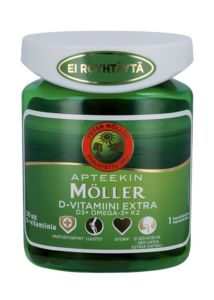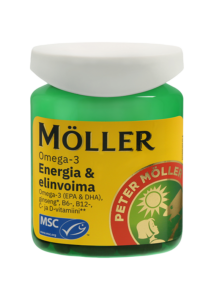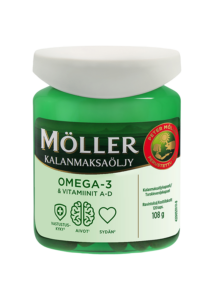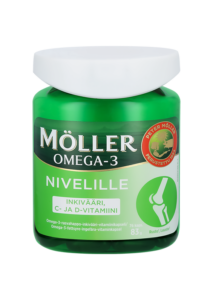Home » Meditointi muuttaa aivoja

Tylsistyttää, hermostuttaa ja ärsyttää?
Takapuolta kivistää ja käsivarsissakin tuntuu ihmeellistä kolotusta. Mieleen laukkaa ajatus toisensa perään, vaikka yrität sinnikkäästi keskittyä sisään- ja uloshengitykseen. Lopulta havahdut siihen, että meditatiivisen mielentilan saavuttamisen sijaan olet minuuttikaupalla miettinyt ostoslistaa illan kauppakäyntiä varten. Eihän tästä tule mitään! Miten ihmeessä pelkkä paikallaan oleminen ja mielen tyhjentäminen voi olla näin vaikeaa?
Meditaatio tekee tutkitusti hyvää!
Monelle ensimmäiset meditointiyritykset ovat täyttä tuskaa. Saattaa tuntua siltä, että mieli ei tunnu millään rauhoittuvan. Meditaatioharrastus kuitenkin kannattaa! Se tekee tutkitusti hyvää sekä mielelle että keholle. Tutkimusten mukaan meditointi voi lieventää stressiä, vähentää taipumusta velloa negatiivisissa tunteissa ja ajatuksissa, sekä helpottaa ahdistus- ja masennusoireita. [1][2] Tietoisuustaitojen opettamista hyödyntävät terapiasuuntaukset ovatkin siksi nykyään yhä suositumpia. Masennukseen taipuvainen ihminen voi oppia tietoisuustaitojen avulla esimerkiksi suhtautumaan hyväksyvämmin vastoinkäymisiin ja niiden synnyttämiin tunteisiin, jolloin negatiiviset tunnereaktiot lievenevät ja masennusoireilu tutkitusti vähenee.[3]
Meditaatiosuuntauksia ja –tekniikoita on lukuisia erilaisia, eikä meditaatiolle ole yhtä määritelmää. Usein meditaatioharjoituksella kuitenkin tavoitellaan rauhoittunutta ja keskittynyttä mieltä. Esimerkiksi tietoiseen läsnäoloon tähtäävä meditaatiosuuntaus (nk. mindfulness) korostaa mielen kykyä pysähtyä nykyhetkeen ja havainnoida ympäristöä ja omia mielenliikkeitä arvostelematta. Se tuo kaivattua lepoa aivoille!
Meditaatiolla vaikutuksia myös aivojen rakenteisiin
Meditaatio ei vaikuta pelkästään mielialaan, vaan se voi saada aikaan muutoksia myös aivojen rakenteessa. Jo muutaman kuukauden meditaatioharrastuksen on esimerkiksi näytetty kasvattavan aivoalueita, jotka liittyvät oppimiseen ja tunteiden säätelyyn.[4] Aivotoimintamme on myös erinäköistä silloin olemme rauhallisessa, meditatiivisessa tilassa, verrattuna siihen kun ajattelemme aktiivisesti. Yllättävää kyllä, mutta meditaation aikana aivoaktivaatio lisääntyy monilla aivoalueilla! Keskittymiseen ja autonomisen hermoston säätelyyn liittyvät alueet työskentelevät ahkerasti, silloin kun meditoimme.[5] Toisaalta ajatusten harhailuun liittyvät aivoalueet hiljenevät, kun keskitymme nykyhetkeen.[6]
Tee siis aivoillesi palvelus antamalla niille joka päivä lyhyt meditaatiohetki. Istu alas, hengitä, ja ole läsnä tässä hetkessä – niin yksinkertaista (mutta haastavaa) se on!
Antoisia meditaatiohetkiä toivottaen,
Mona
[1] Chiesa, A., & Serretti, A. (2009). Mindfulness-based stress reduction for stress management in healthy people: a review and meta-analysis. The Journal of Alternative and Complementary Medicine, 15(5), 593-600.
[2] Goyal, M., Singh, S., Sibinga, E. M., Gould, N. F., Rowland-Seymour, A., Sharma, R., … & Ranasinghe, P. D. (2014). Meditation programs for psychological stress and well-being: a systematic review and meta-analysis. JAMA Internal Medicine, 174(3), 357-368.
[3] Gu, J., Strauss, C., Bond, R., & Cavanagh, K. (2015). How do mindfulness-based cognitive therapy and mindfulness-based stress reduction improve mental health and wellbeing? A systematic review and meta-analysis of mediation studies. Clinical Psychology Review, 37, 1-12.
[4] Hölzel, B. K., Carmody, J., Vangel, M., Congleton, C., Yerramsetti, S. M., Gard, T., & Lazar, S. W. (2011). Mindfulness practice leads to increases in regional brain gray matter density. Psychiatry Research: Neuroimaging, 191(1), 36-43.
[5] Lazar, S. W., Bush, G., Gollub, R. L., Fricchione, G. L., Khalsa, G., & Benson, H. (2000). Functional brain mapping of the relaxation response and meditation. Neuroreport, 11(7), 1581-1585.
[6] Brewer, J. A., Worhunsky, P. D., Gray, J. R., Tang, Y. Y., Weber, J., & Kober, H. (2011). Meditation experience is associated with differences in default mode network activity and connectivity. Proceedings of the National Academy of Sciences, 108(50), 20254-20259.
What is good health?
Do you have a good lifestyle?
Lifestyle simply means the way in which you live. Health and lifestyle go hand in hand. You might feel you have a good lifestyle if you are physically active, eat healthily and generally experience a sense of wellbeing. Conversely, if you want good health you should also have a good lifestyle.
Physical activity is the major contributor to a good lifestyle, but diet, drugs, stress, sleep and social conditions are also play an important role. Being able to use the body properly to avoid injury also affects lifestyle. Physical activity can also prevent depression and help you to recover more quickly from mental illness, both of which obviously affect your lifestyle.
Diet can be a difficult topic for many. Perhaps you eat too much or too little or maybe you find it hard to know what foods to combine to have a balanced diet. It’s also important to eat food that contains important vitamins, minerals and dietary fibre, omega-3 and antioxidants. On top of all this, you also need to get enough energy, protein and the correct fatty acids. The requirement for these nutrients changes throughout your life. When you are older you also have different requirements than children and younger adults. Women also have different requirements than men. Pregnant and breastfeeding mothers also have special requirements.
When you get older, you lose muscle mass and your body requires less energy and therefore less food. You may lead a less active life than you did before, which is why you require less food. However, your need for minerals, vitamins and other nutrients remains the same. Of course, there are plenty of healthy and active older people, but when you reach 70 to 80 years of age, it’s easier to become ill, especially during flu season.
Some steps you can take to improve your lifestyle and health are to:
- eat a healthy and varied diet
- stay active
- watch your weight
- avoid too much alcohol and don’t smoke
- get enough sleep
- think positive
- practise good hygiene
What is good quality of life?
The World Health Organisation (WHO) defines quality of life as a state where the individual can realise their potential, cope with normal stressful situations, work in a rewarding and positive way, and be able to contribute to others and society.
Quality of life is a wide and somewhat diffuse concept that includes joy in, and a desire for, life. These are values that are rather felt than measured, which in turn are based on personal environment and choices. Quality of life doesn’t necessarily depend on being healthy or sick. It’s the moments between worries, sorrows, problems and ailments that matter. For example, if you have a chronic illness, a feeling of mastery can be important when talking about quality of life.
To sum up, quality of life is a combination of health, lifestyle, networks and social support. It’s about experiencing joy, meaning in life, satisfaction, security and a sense of belonging, as well as being able to use your strengths. It’s also about feeling interest in life, coping with everyday situations and a being committed to something or someone. If you have good quality of life, you will be able to cope better with the inevitable stressful situations in life.
Tuotteita
-
Apteekin Möller D-Vitamiini Extra
Möller omega-3 valmiste lihaksille ja nivelille. Sisältää omega-3 rasvahappoja, magnesiumia, mangaania, C- ja D-vitamiineja sekä inkivääriä.
-
Möller Omega-3 Silmät & näkökyky
Möller omega-3 valmiste lihaksille ja nivelille. Sisältää omega-3 rasvahappoja, magnesiumia, mangaania, C- ja D-vitamiineja sekä inkivääriä.
-
Möller Omega-3 Lihakset & nivelet
Möller omega-3 valmiste lihaksille ja nivelille. Sisältää omega-3 rasvahappoja, magnesiumia, mangaania, C- ja D-vitamiineja sekä inkivääriä.
-
Möller Vegaani Omega-3 ja D-vitamiini
-
Möller Sydämelle
-
Möller Vahva Omega-3
-
Möller Kalanmaksaöljy Sitruuna
-
Möller Kalanmaksaöljy
-
Apteekin Möller Extravahva
-
Möller Omega-3 Energia & Elinvoima
-
Möller Omega-3 Iho & hiukset
-
Möller Omega-3 Kalanmaksaöljykapseli
-
Möller Nivelille
-
Möller Omega-3 Pikkukalat
-
Möller Tupla


















